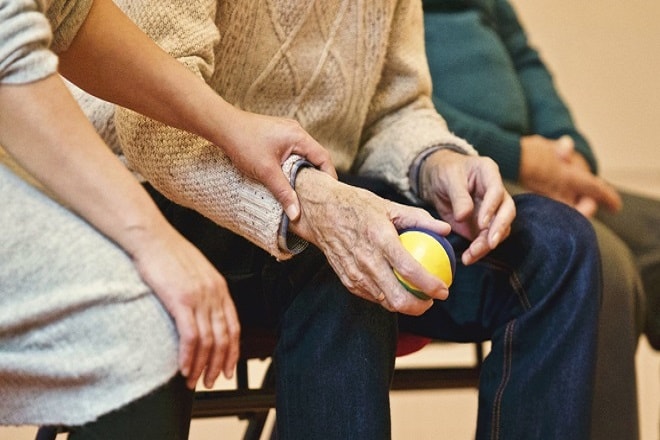Understanding and Managing Incontinence in Seniors: A Comprehensive Guide
Incontinence is a common but often overlooked health concern that affects many seniors and elderly individuals. This involuntary loss of bladder or bowel control can significantly impact quality of life, causing embarrassment, social isolation, and decreased independence. However, with proper understanding, management, and the right products, seniors can maintain their dignity and continue to lead active, fulfilling lives. This article explores the causes, types, and management strategies for incontinence in older adults, with a focus on practical solutions such as specialized underwear and diapers.

What are the different types of incontinence seniors may experience?
Seniors may experience several types of incontinence, each with distinct characteristics:
-
Stress incontinence: Urine leakage occurs during physical activities that put pressure on the bladder, such as coughing, sneezing, or lifting.
-
Urge incontinence: Also known as overactive bladder, this type involves a sudden, intense urge to urinate followed by involuntary loss of urine.
-
Overflow incontinence: The bladder doesn’t empty completely, leading to frequent or constant dribbling.
-
Functional incontinence: Physical or mental impairments prevent a person from reaching the toilet in time.
-
Mixed incontinence: A combination of two or more types, often stress and urge incontinence.
Understanding the specific type of incontinence a senior is experiencing is crucial for determining the most effective management strategy.
How can incontinence be managed in elderly individuals?
Managing incontinence in seniors involves a multi-faceted approach:
-
Medical evaluation: Consult a healthcare provider to determine the underlying cause and appropriate treatment options.
-
Lifestyle modifications: Implement bladder training techniques, pelvic floor exercises, and dietary changes to reduce irritants.
-
Medication: In some cases, doctors may prescribe medications to help control overactive bladder or other incontinence-related issues.
-
Absorbent products: Utilize specialized incontinence underwear or diapers designed for comfort and discretion.
-
Scheduled toileting: Establish regular bathroom visits to prevent accidents and retrain the bladder.
-
Fluid management: Balance hydration needs while avoiding excessive fluid intake, especially before bedtime.
-
Environmental adaptations: Make home modifications to ensure easy and quick access to toilets.
What types of incontinence underwear are available for seniors?
Incontinence underwear has come a long way in recent years, offering seniors discreet and effective options for managing their condition:
-
Disposable underwear: These pull-up style garments resemble regular underwear but provide absorbent protection. They’re convenient for daily use and travel.
-
Washable underwear: Reusable options that look and feel like regular underwear but incorporate absorbent materials. They’re eco-friendly and cost-effective for long-term use.
-
Overnight underwear: Designed with higher absorbency for extended protection during sleep.
-
Gender-specific designs: Underwear tailored to the anatomical differences between men and women for optimal fit and protection.
-
Swim diapers: Specialized underwear that allows seniors to enjoy water activities without worry.
When choosing incontinence underwear, consider factors such as absorbency level, comfort, discretion, and ease of use.
How do incontinence diapers differ from regular underwear?
While both incontinence underwear and diapers serve the same general purpose, there are some key differences:
-
Absorbency: Diapers typically offer higher absorbency and are suitable for heavier incontinence or overnight use.
-
Design: Diapers often have side tabs for easy changing, while underwear pulls on like regular undergarments.
-
Discretion: Underwear designs are generally more discreet and resemble regular underwear, which many seniors prefer for daytime use.
-
Fit: Diapers may provide a more secure fit for individuals with mobility issues or those who are bedridden.
-
Skin health: Some diapers are designed with breathable materials to promote better skin health, which is crucial for seniors prone to skin irritation.
| Product Type | Features | Best For | Estimated Cost Range |
|---|---|---|---|
| Disposable Underwear | Pull-up style, discreet, various absorbency levels | Daily use, travel | $0.50 - $2 per piece |
| Washable Underwear | Reusable, eco-friendly, looks like regular underwear | Long-term use, light to moderate incontinence | $10 - $30 per piece |
| Overnight Diapers | High absorbency, secure fit | Heavy incontinence, overnight use | $1 - $3 per piece |
| Gender-Specific Underwear | Tailored fit, targeted absorption | Daily use, comfort | $0.75 - $2.50 per piece |
| Swim Diapers | Water-resistant, discreet | Water activities | $2 - $5 per piece |
Prices, rates, or cost estimates mentioned in this article are based on the latest available information but may change over time. Independent research is advised before making financial decisions.
In conclusion, incontinence is a manageable condition that shouldn’t prevent seniors from enjoying life to the fullest. By understanding the causes, types, and available management options, elderly individuals can find solutions that work best for their specific needs. Whether opting for specialized underwear or diapers, the key is to choose products that offer comfort, protection, and dignity. With the right approach and support, seniors can effectively manage incontinence and maintain their independence and quality of life.






